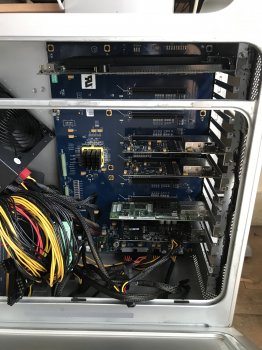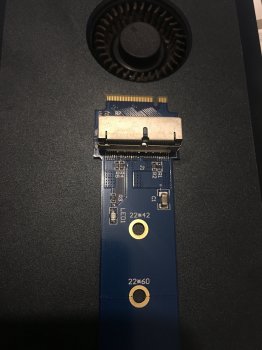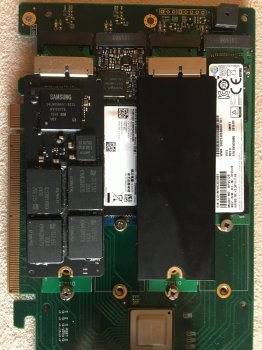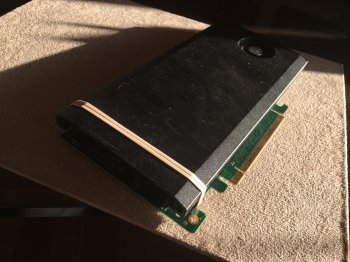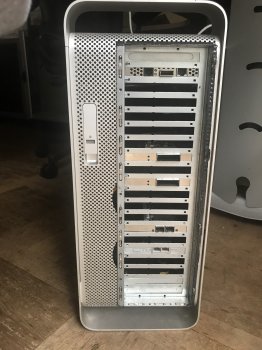Very nice. Have you looked at any gen 3 solutions? I think
they're much more expensive but you could use it to get full speed from a Thunderbolt 3 card.
yes I know!
I had a gen3 netstor pcie expander but as my mac was gen2 never noticed a difference.
my feelings are that 16xgen2 is still plenty enough for most of the things I have.
if the 2019 macpro have pciex16gen4 slot, I will still use those expender because i think only 4 nvme ssd or a very high end gpu can stress pciex16 gen3.
now I am happy with my setup, and the only thing that would help is a much faster and more modern cpu that support hvec and all codecs in hardware and way faster memory .
once you reach 5gb/s R/W with very low latency for cache and as long as your media are on a very powerful raid, in video editing I feel it is not anymore the storage that is holding you.
so far my machine is the fastest machine I have used with premiere on mac. the top of the line Imac pro is faster on 4k h264 media but on 5/6/8k prores 444 my machine crunches it.
but my friend maxed out Z8 with two p6000 make my mac look like what it really is : a 10 year old computer.
man that thing is fast... probably 5 time faster and absolutely no timeline render whatsoever, and exporting is like 10 time faster.
that is why the more it goes, the more i think pcie expender are the true modularity.
if the computer can be cheaper by just having the cpus the ram and basic I/O,
and then you have a chassis with all pcie lanes of both cpu on a switched board that translates pcie gen lanes that would be sweet.
you could put a gen 2 16x gpu on a slot but it would actually be seen as a 4x pcie Gen4 slot.
Pcie ssd is what have pushed the boundaries of bandwith in need for new highs.
so far now the cpu are the bottleneck in video editing because no software is written for 56 core software, therefore in most case a very fast and overclocked modern 6 core i9 machine is faster than a server grade monster in premiere or any adobe app because it is single core performance that count in their code.
I think very high end server cpu are not anymore built for general purposes but very oriented for VM.
I really hope that apple will bring back a form of XGRID because that was really a good way to increase speed back in the days.
with xgrid or when compressor / after effect where having a second machine to work on, you would litteraly see twice the speed.
with 10gbe the way i see it would be to have I servergrade main machine, and macminis as helper.
rendering on distributed computer with 4 6core macmini to help the xeon W would be blazing fast probably faster than a 50k$ server.
all you need is a 4 port 10gbe pcie card, and 4 x 2000$ mac mini and you are golden.


